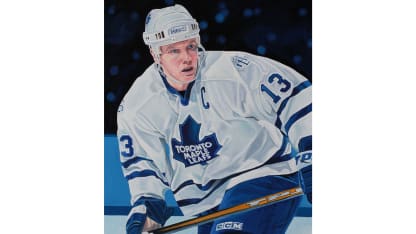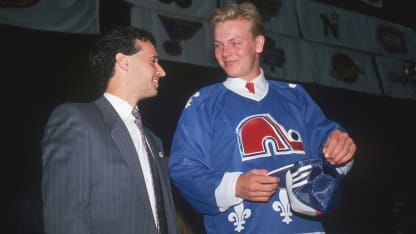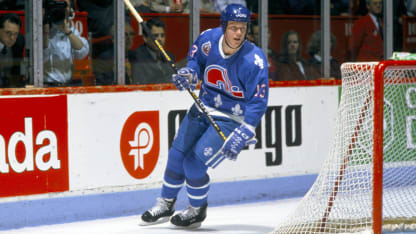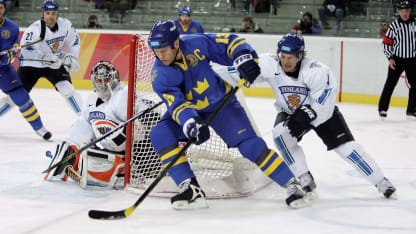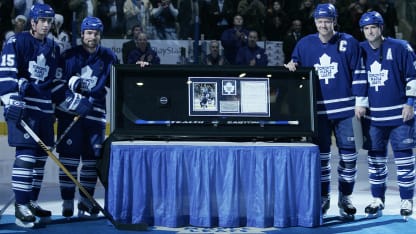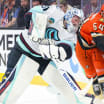"It's a little sad to announce that my career as a professional hockey player is over," he said at a press conference in Stockholm. "I would have loved to play until the age of 65, but as a hockey player you obviously retire a little earlier than that."
The Maple Leafs were effusive in their praise of Sundin's contributions to the team.
"Mats always carried himself in an exemplary manner both on and off the ice," said then-general manager Brian Burke. "As captain of the Leafs for over a decade, his commitment to charitable initiatives within our community was extraordinary. He will go down in history as one of the greatest players to ever wear the Toronto Maple Leafs sweater. We extend our best wishes for continued success to Mats and his family."
Sundin is celebrated outside Air Canada Centre in Toronto with a statue on Legends Row. At the Maple Leafs' 2016-17 home opener, having just been voted No. 5 on the list of Toronto's top 100 players, his No. 13 was among 17 numbers retired.
"A Stanley Cup ring would've been nice to have," Sundin said when he retired. "But in all honesty, I've experienced and won so much since I landed in Quebec as a 19-year-old. It feels like I've experienced so much more than I could ever have imagined."
For more, see all 100 Greatest Players

